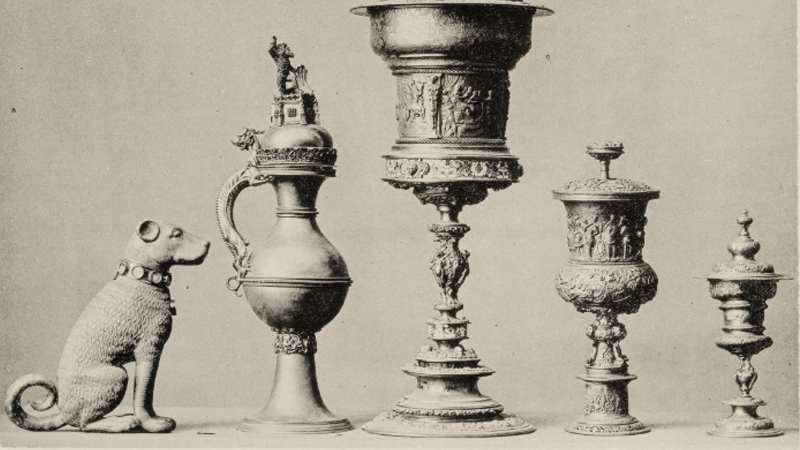Electrotypes are a direct result of the scientific and technological advances developed in the late eighteenth and nineteenth centuries in the field of electricity and electrochemistry. Appearing in the 1830s, the electrochemical process of electrotyping was used, among other scientific, industrial and artistic applications, to produce very precise reproductions of objects made from silver, gold and other metals (the electrotypes) using moulds, a chemical solution and an electric current.
The 19 th -century fascination with reproductions of artworks was linked to this phenomenon and paved the way for it to become an integral part of the activity of museums that sought to collect electrotypes, in addition to photographs or plaster casts. As aesthetic, formal and ornamental models, these reproductions (along with original objects) took on an important role in the visual education of the public and of artists and craftspeople, enhancing the formation of taste and proficiency within the artistic industries.
This is the context in which the collection of electrotypes belonging to the Museu Nacional de Arte Antiga was formed,
composed of around ninety objects, mostly resulting from the collecting activities of the Academia de Belas-Artes de Lisboa [Academy of Fine Arts of Lisbon] (predecessor to the MNAA) in the area of ornamental arts, with particular emphasis on three specific moments: 1866, 1875 and 1881/1882.
Around a hundred years after the transfer of these objects from the Museum’s galleries to its storage facilities, this exhibition intends to evoke the contexts in which this collection was formed and its historical importance, as well as prompting its much-needed reappraisal.
Curator
André Afonso
OPENING
25 may | 17h
Curator
André Afonso
OPENING
25 may | 17h

